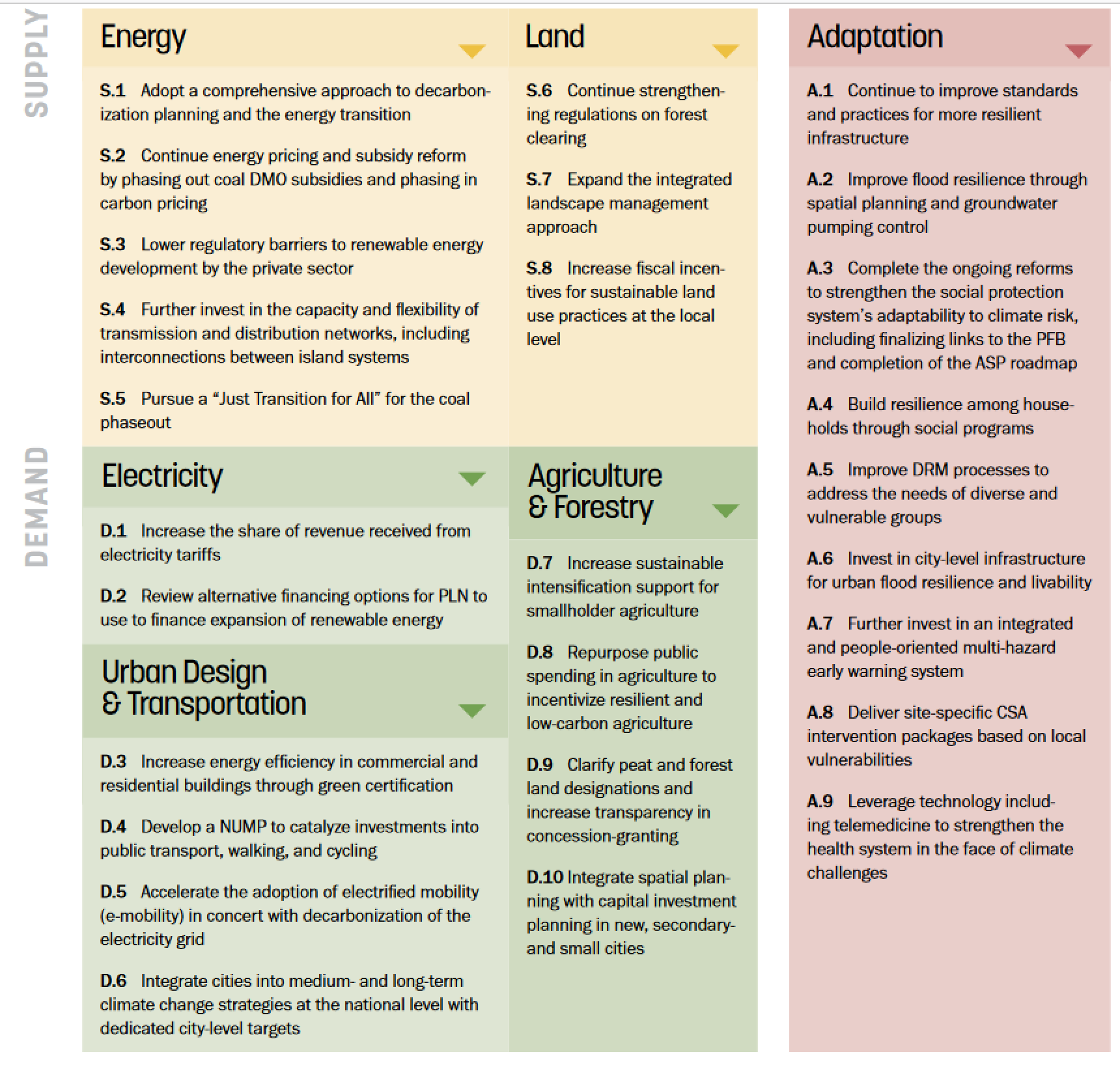Key Messages:
-
Indonesia’s strong growth and poverty reduction over the past 20 years have moved in parallel with rising greenhouse gas emissions, consistent with its stage of development.
-
Indonesia’s climate transition could contribute to the country’s economic growth and poverty alleviation agenda. Land, energy, and fiscal reforms in line with the NDC targets could raise Indonesia’s GDP relative to business as usual, while helping to alleviate poverty.
-
Emissions are being reduced through improved land use. Indonesia aims to reach net zero emissions in Forestry and Other Land Use (FOLU) by 2030, which will make a major contribution to Indonesia’s enhanced NDC target. Land use policies implemented over the past decade are showing results, with strong decreases in deforestation now evident. Further ecosystem restoration and sustainable forest management techniques can accelerate this trend.
-
The energy sector is expected to become the largest contributor to GHG emissions by 2030.
-
Low-carbon transport and efficient cities can lower emissions and deliver co-benefits.
-
Economy-wide actions are needed for development synergies. Going beyond actions in specific sectors (such as forestry, transport or electricity), Indonesia’s transition would benefit from further: (1) fiscal policy that includes carbon pricing and energy subsidy reform, (2) financial reform, particularly of risk management tools, (3) investment climate improvements, mainly through public-private partnership framework and state-owned enterprises reform, and (4) trade policy reform, particularly the reduction of certain non-tariff measures.
-
A strong enabling environment for green investment by the private sector is critical.
-
Enhanced data, spatial planning, and social protection systems will lessen climate impacts. Disaster risk management systems have improved over the past decade, along with the coverage and strength of Indonesia’s social protection system. Further enhancements to early-warning systems will help mitigate disaster impacts. Vulnerability will also be reduced through re-mapping of flood-prone zones with climate-sensitive hydrological predictions and strong implementation of spatial plans.
Highlights on food and nutrition security
- Agriculture is vulnerable to climate change impacts, with implications for food and nutrient security. In the absence of countermeasures to boost yields, rising temperatures and shifting rainfall are projected to reduce yields of irrigated rice (-0.72 percent by 2030), maize (-7.1 percent), and palm oil (-1.19 percent). Pest and disease outbreaks, induced by higher temperatures, are expected to intensify, along with the impact of floods, droughts, and salt-water intrusion. These factors contribute to a higher risk of crop failure which, in turn, leads to loss of income for farmers and more volatile food prices for consumers. Indonesian consumers already pay among the highest prices in the region for staples and nutritious food‒contributing to poor nutrition outcomes. While stunting levels have fallen considerably in recent years, 24.4 percent of Indonesia’s children under five years of age still suffered from stunting in 2021.
Priorities

| Year of publication | |
| Geographic coverage | Indonesia |
| Originally published | 03 May 2023 |
| Related organisation(s) | World Bank |
| Knowledge service | Metadata | Global Food and Nutrition Security | Climate extremes and food security | Food and nutrition securityClimate action |
| Digital Europa Thesaurus (DET) | Climate change mitigationgreenhouse gasadaptation to climate changedisaster risk reductionpolicymakingclimate change policy |
